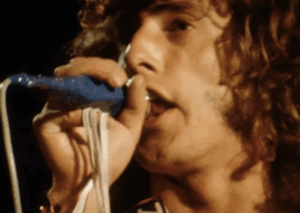5 Worst Classic Rock Band Breakups We Haven’t Forgiven Yet
via Acoustic Rock Collection / YouTube
Classic rock bands often created timeless music, but behind the scenes, many faced serious conflicts. These internal struggles sometimes led to breakups that disappointed fans and left lasting tensions among members. Here are five notable examples where the music ended, but the disagreements continued.
The Beatles
View this post on Instagram
The Beatles, formed in 1960, revolutionized music but disbanded in 1970. Several factors contributed to their breakup, including the death of their manager, Brian Epstein, in 1967, which left a leadership void. Creative differences grew, with members pursuing individual projects. John Lennon’s relationship with Yoko Ono and his heroin use added strain. Paul McCartney’s push for his in-laws to manage the band clashed with the others’ preference for Allen Klein. These issues led to legal battles and public disputes.
In April 1970, McCartney announced his departure, shocking fans. Lennon later said, “I had to either be married to them [the band] or Yoko, and I chose Yoko.” The breakup was not just about one event but a series of disagreements and personal changes. Despite occasional collaborations, the band never fully reunited. Their split remains one of the most talked-about in music history.
Led Zeppelin
View this post on Instagram
Led Zeppelin, formed in 1968, became one of the most influential rock bands. Their music blended blues, rock, and folk, creating a unique sound. Tragedy struck in 1980 when drummer John Bonham died after a heavy drinking session. The band decided they couldn’t continue without him, stating, “We wish it to be known that the loss of our dear friend and the deep sense of undivided harmony felt by ourselves and our manager have led us to decide that we could not continue as we were.”
Although they reunited for special events, such as Live Aid in 1985 and a 2007 tribute concert, they never fully reformed. The remaining members pursued solo careers, but fans often hoped for a complete reunion. The band’s decision to end after Bonham’s death showed their commitment to their original lineup. Their breakup marked the end of an era in rock music.
Pink Floyd
View this post on Instagram
Pink Floyd, known for their progressive rock sound, faced internal conflicts in the 1980s. Roger Waters, a key member, left the band in 1985, believing it couldn’t continue without him. He even took legal action to prevent the remaining members from using the band’s name, calling Pink Floyd “a spent force creatively.” However, David Gilmour and Nick Mason continued without him, releasing new albums and touring.
The legal battles and public disagreements created a divide among fans. Waters and Gilmour occasionally reunited for special performances, but tensions remained. Their differences highlighted the challenges bands face when key members have conflicting visions. Despite their issues, Pink Floyd’s music continues to influence artists worldwide.
Creedence Clearwater Revival
View this post on Instagram
Creedence Clearwater Revival (CCR), active from 1968 to 1972, produced hits like “Bad Moon Rising” and “Fortunate Son.” However, internal disputes led to their downfall. Tom Fogerty left the band in 1971 due to conflicts with his brother, John Fogerty, over creative control. The remaining members released the album “Mardi Gras,” which received poor reviews. Rolling Stone’s Jon Landau called it “the worst album I have ever heard from a major rock band.”
Legal battles over music rights and disagreements with their label further strained relationships. At their 1993 Rock and Roll Hall of Fame induction, John Fogerty refused to perform with his former bandmates. The band’s breakup left fans disappointed, especially given their rapid rise and success. Their story serves as a reminder of how personal conflicts can overshadow musical achievements.
The Police
View this post on Instagram
The Police, formed in 1977, achieved massive success with hits like “Every Breath You Take.” Despite their popularity, tensions between Sting and drummer Stewart Copeland grew. Their creative differences and personal clashes made collaboration difficult. After their 1983 album “Synchronicity,” the band went on hiatus. They officially disbanded in 1986.
In 2007, they reunited for a world tour, which was commercially successful. However, the underlying tensions remained. Interviews revealed that old conflicts resurfaced during the tour. While fans cherished the reunion, it was clear that the band’s internal issues persisted. Their breakup highlighted the challenges of maintaining harmony in creative partnerships.












